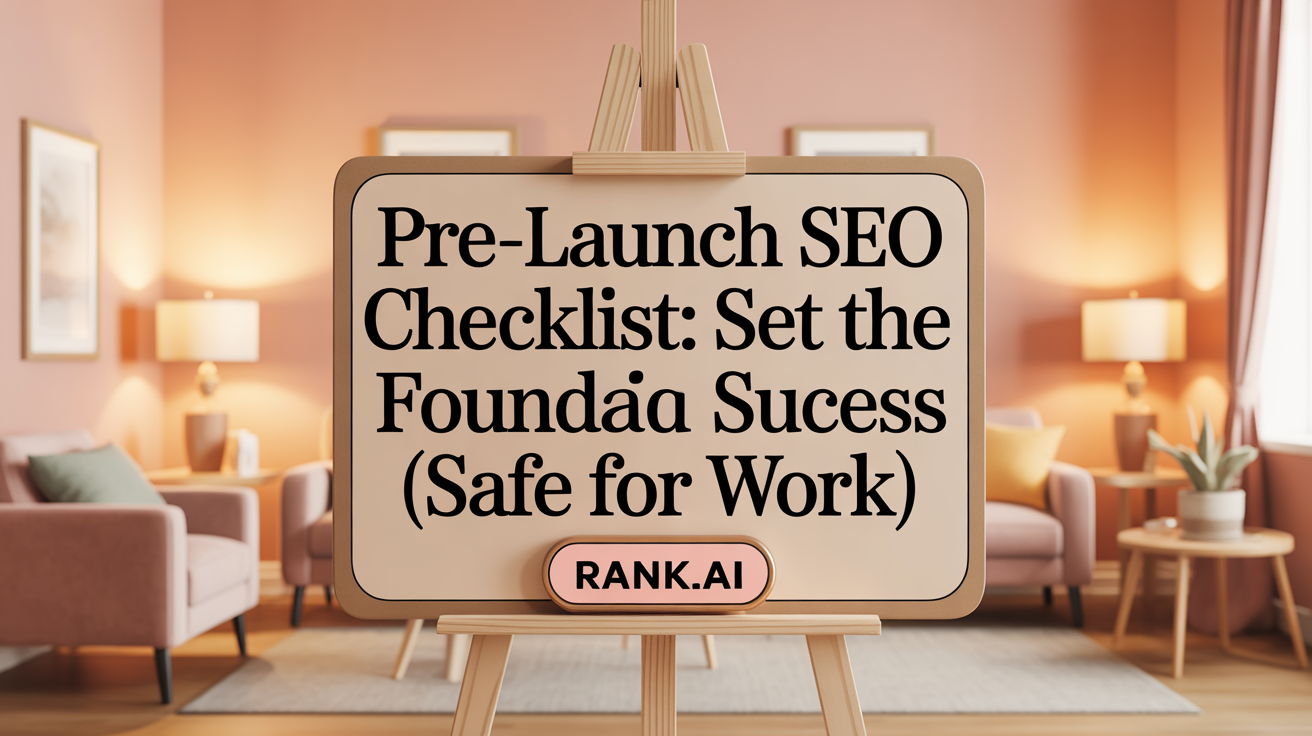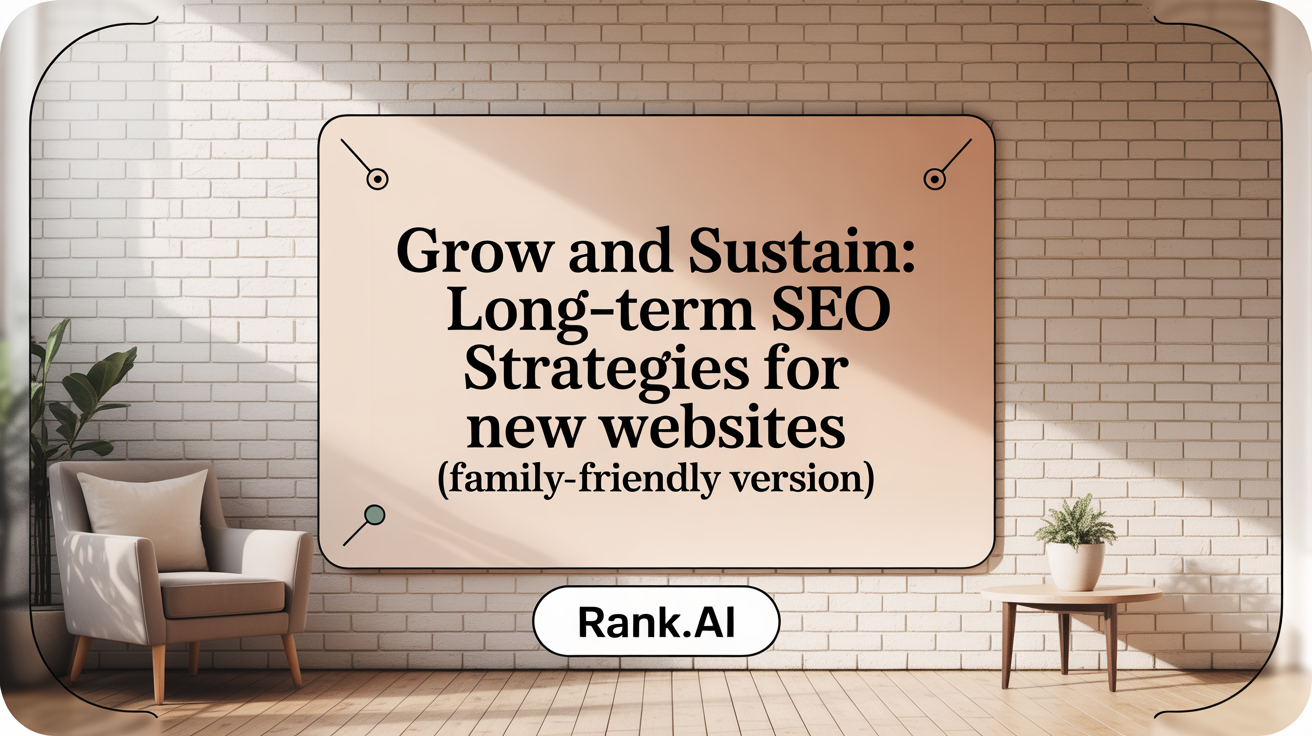Embarking on SEO for Your New Website
Launching a new website entails more than just design and functionality; mastering SEO from the outset shapes your site's discoverability and long-term success. This article guides new website owners through foundational SEO concepts, initial setup, strategic planning, and practical techniques to optimize visibility, attract organic traffic, and build lasting authority in search engines.
Understanding SEO: What It Is and How It Works
What is SEO and how does it work?
SEO, or Search Engine Optimization, is the practice of enhancing a website’s visibility on search engine results pages (SERPs). The main goal is to attract more organic, unpaid traffic by making a site more appealing to search engines like Google. To do this effectively, SEO is built on three main areas: technical, on-page, and off-page optimization.
Technical SEO involves speeding up your website, ensuring it is secure with HTTPS, organizing content with structured data, and making your site easy for search engines to crawl and index. On-page SEO focuses on creating high-quality, relevant content that includes well-placed keywords, compelling meta titles, descriptions, and internal links that help search engines understand your site. Off-page SEO, on the other hand, is about building a strong reputation through backlinks—links from other reputable sites that boost your authority.
Search engines like Google use complex algorithms, including AI systems like RankBrain, to analyze countless signals—over 200 different factors—that determine how relevant and trustworthy your content is for certain search queries. These algorithms continuously evolve, making SEO a dynamic field.
To succeed, website owners need to understand how Google and other search engines explore, evaluate, and rank pages. This involves strategies like optimizing site speed, producing keyword-rich content that matches user intent, and earning quality backlinks. Monitoring performance using tools like Google Search Console and Analytics helps identify what’s working and what needs improvement.
Ultimately, SEO connects users with valuable information efficiently. It’s about creating websites that are easy to find, easy to navigate, and packed with content that answers the questions users are actively searching for. When done well, SEO not only increases visibility but also builds trust and authority for your website, leading to sustained, long-term growth.
First Steps in SEO Setup for a New Website
What is the first step in the SEO process for a new website?
The initial phase in SEO for a new website involves thorough research and discovery. This foundational step includes understanding your target audience, analyzing competitors, conducting keyword research, and performing a technical audit of your site.
Starting with audience analysis helps identify what your potential visitors are searching for and what content appeals to them. Simultaneously, competitor analysis reveals which keywords and strategies are working in your niche.
Keyword research is crucial for understanding relevant search terms, their search volume, and competition levels. Using tools like Semrush or Ahrefs allows you to select keywords that are attainable and align with user intent.
A technical audit ensures your website's structure is optimized for search engine crawlers. It involves checking for crawl errors, duplicate content, or security issues like SSL certificates.
Identifying technical issues early, such as broken links or slow load times, allows you to address them promptly and improve site health, which is vital before creating content or building backlinks.
This phase helps define clear SEO priorities and strategy rules, guiding subsequent efforts in content development, technical improvements, and outreach.
Focus on foundational activities during this discovery stage sets the tone for effective SEO growth, ensuring your website is well-positioned to rank higher and attract organic traffic over time.
Introducing the Three Cs: Content, Code, and Credibility
 The 3 C's of SEO—Content, Code, and Credibility—are essential pillars for building a website’s visibility in search engine results.
The 3 C's of SEO—Content, Code, and Credibility—are essential pillars for building a website’s visibility in search engine results.
Content is the heart of SEO. Creating high-quality, relevant, and keyword-rich text helps search engines understand what your site is about. Proper keyword placement within headlines, meta descriptions, and page copy ensures your content matches what users are searching for. This user-focused approach not only improves rankings but also enhances user experience, encouraging visitors to stay longer and engage more.
The Code aspect emphasizes maintaining clean, accessible website structure. Optimizing titles, meta tags, alt attributes for images, and ensuring fast, mobile-responsive pages make it easier for search engines to crawl and index your site. A well-structured website with clear URLs and efficient coding practices improves user navigation and helps your pages rank higher.
Credibility is built through backlinks and authoritative signals. Gaining high-quality links from reputable websites signals to search engines that your content is trustworthy and valuable. Establishing industry relevance and earning mentions through sharing valuable content and community engagement further boosts your site’s authority.
When these three elements work together—creating compelling content, maintaining clean and optimized code, and building trust through backlinks—your website stands a better chance of ranking highly in search results and attracting targeted organic traffic.
What are the 3 C's of SEO? The 3 C's of SEO are Content, Code, and Credibility. Content involves creating keyword-rich text placed strategically on key web pages, ensuring that search engines can easily understand and index the information. Code refers to maintaining high-quality, accessible website code with optimized titles, META tags, ALT attributes, and relevant domain names to improve indexing and user experience. Credibility is built by acquiring relevant, high-quality backlinks from authoritative and industry-relevant sites, boosting trust and search rankings. Together, these elements form the foundation for effective SEO, enhancing visibility and ranking in search engine results.
More info: If you search for '3 Cs SEO essentials,' you'll find numerous guides that delve into these fundamental principles, emphasizing their importance in a successful SEO strategy.
Strategic Keyword Research: The SEO Cornerstone

What is the purpose of keyword research for new websites?
Keyword research helps you understand what your potential visitors are searching for online. For new websites, this process identifies relevant words and phrases that match user intent, guiding the creation of content that is more likely to rank in search results. It also reveals the level of competition for different keywords, helping you choose achievable targets to establish your presence.
What tools are available for keyword discovery and competition analysis?
Popular tools like Semrush, Ahrefs, and Keywords Everywhere are instrumental in discovering relevant keywords. They provide data on search volume, keyword difficulty, and related terms. These platforms also allow you to analyze your competitors' keyword strategies, helping you find gaps and opportunities to outrank them.
How do you select keywords based on search intent and rankability?
Choosing the right keywords involves understanding what users intend when they search. Are they looking for information, products, or solutions? Focus on keywords that match your content and are achievable considering your website's authority. Typically, long-tail keywords and those with manageable competition are easier for new sites to rank for and tend to convert better.
Why is incorporating head keywords and long-tail keywords important?
Head keywords are broad terms with high search volume, such as "SEO tools". Long-tail keywords are specific phrases, like "best SEO tools for small business". Combining both ensures your content appeals to broad audiences while targeting niche queries. For new websites, ranking for long-tail keywords initially helps build authority gradually.
How should you map keywords to your content and site structure?
Once you've identified your target keywords, organize them into topics aligned with your site structure. Assign primary keywords to main pages and use related long-tail keywords for subpages or blog posts. This mapping ensures your content effectively covers your chosen keywords and creates a logical hierarchy that search engines can easily understand.
Planning Your Site Structure for Optimal SEO
 When designing your website, a well-thought-out structure is essential for both search engine ranking and user experience. Logical site architecture fundamentals involve creating a clear hierarchy that guides visitors easily and helps search engines understand the importance and relationships of your pages.
When designing your website, a well-thought-out structure is essential for both search engine ranking and user experience. Logical site architecture fundamentals involve creating a clear hierarchy that guides visitors easily and helps search engines understand the importance and relationships of your pages.
A common approach is to organize pages into main categories and subpages, forming a pyramid-like hierarchy. The homepage should link to main sections or categories, which in turn link to individual content pages or product listings. This not only makes navigation straightforward for users but also ensures that key pages get crawled efficiently by search engines.
Creating a clear hierarchy and navigation involves designing menus and internal links that reflect the site’s content structure. Use a top-down approach, starting with broad topics and narrowing down to specific content. Such organization helps search engines discover all your pages and improves your site’s overall relevancy.
Organizing pages into directories and silos further boosts SEO. For example, grouping related content within folders like /blog/, /products/, or /services/ makes URLs descriptive and relevant. This strategy simplifies crawling and indexing, as it visually reinforces thematic relationships among content.
Using descriptive and static URLs that incorporate relevant keywords helps search engines and users understand what a page is about at a glance. Avoid complex URL parameters where possible, and instead, choose clean, keyword-rich URLs like www.yoursite.com/seo-tips instead of www.yoursite.com/page?id=123.
The benefits of such a structured approach include easier crawlability, which means search engines can index your pages more effectively. It also enhances user experience by providing straightforward navigation, reducing confusion, and encouraging visitors to explore more content.
To optimize your content and structure your new website for SEO, start by creating high-quality, relevant content that targets well-researched keywords naturally. Organize your content into topically related groups, creating silos that demonstrate authority in each niche.
Implement a logical, flat site architecture with internal links that connect related pages and improve the flow of PageRank across your site. Optimize page titles, meta descriptions, headers, and images with descriptive alt text to improve search visibility.
Ensure that your website is fast-loading, mobile-responsive, and accessible to all users. Utilizing tools like Google Search Console and SEO plugins can help monitor your SEO health, identify issues, and streamline ongoing improvements.
Finally, boost your site’s authority by sharing your content on social media platforms and engaging with relevant communities. This enhances backlinks and general visibility, which are crucial signals for search ranking success.
Following these best practices in website structure and content organization will set a solid foundation, helping your new website rank higher and attract more traffic in the long run.
Technical SEO Essentials Before Launch
What technical SEO considerations should be addressed when launching a new website?
Before unveiling your new website, it’s crucial to review several technical SEO elements that influence how search engines discover, crawl, and index your pages.
First, ensure your site is fully crawlable and indexable by submitting an XML sitemap and properly configuring your robots.txt file. These tools guide search engines on which pages to explore and which to avoid, preventing accidental blocking of important content.
Implement canonical tags on your pages to indicate the preferred version of duplicate or similar content, which helps prevent duplicate content issues that could harm your rankings.
Security is also a top priority. Configure your website with HTTPS by installing an SSL certificate, which not only protects your visitors' data but also boosts your SEO trustworthiness.
Page speed and mobile responsiveness are essential. Optimize images through compression, leverage browser caching, and minimize code to load pages faster. Use responsive design to ensure your website displays properly on all devices, aligning with Google’s mobile-first indexing policies.
Structured data markup, such as schema.org, should be added to your pages to improve search result listings with rich snippets, enhancing visibility and click-through rates.
Finally, set up analytics tools like Google Analytics and Google Search Console. These platforms provide vital insights into your site's performance, indexing status, and any crawling errors. After launch, routinely monitor and fix issues like broken links or duplicate content to sustain good SEO health.
By carefully managing these technical aspects, your website will be well-positioned to achieve better search engine rankings and deliver a smooth user experience from day one.
Crafting High-Quality Content That Ranks
Understanding search intent and user needs
Creating effective SEO content begins with understanding what users are searching for. By analyzing search intent—whether informational, transactional, navigational, or commercial—you can tailor your content to meet those specific needs. This focus helps your pages rank higher because they directly answer what people are looking for.
Creating unique, engaging, and updated content
Search engines favor content that is original and provides real value. Regularly updating your content keeps it current and relevant. Focus on producing comprehensive, well-researched articles that establish trust and authority. High-quality content not only attracts visitors but also encourages longer visits and sharing.
Using keywords naturally and strategically
Inserting keywords into your content should feel organic, not forced. Place important keywords in titles, headers, and naturally throughout your text. Proper keyword placement helps search engines understand your page’s topic without diminishing readability. Long-tail keywords are especially useful for new sites targeting niche topics.
Optimizing titles, meta descriptions, headers, and alt text
Your page titles and meta descriptions are what users see in search results. Craft compelling, keyword-rich titles and descriptions to boost click-through rates. Use header tags (H1, H2, H3) to organize content for both readers and search engines. Don’t forget alt text for images—descriptive and keyword-appropriate alt tags improve accessibility and help search engines understand your visuals.
Incorporating multimedia and SEO-friendly images
Adding images, videos, and infographics makes your content more engaging. Use descriptive filenames and alt text with relevant keywords to enhance SEO. Compress images to ensure fast load times, which are crucial for user experience and ranking. Well-optimized multimedia can improve dwell time and reduce bounce rates, signaling content quality to search engines.
Implementing On-Page SEO Best Practices
How do I start SEO for a new website?
Beginning SEO for a new website involves several fundamental steps to ensure that search engines can index and rank your content effectively. First, focus on optimizing your site’s structure by creating descriptive, keyword-rich URLs, and organizing pages logically with a clear hierarchy. This helps Google and other search engines understand the importance of each page.
Next, pay attention to your page’s titles and meta descriptions. Use compelling, unique titles with relevant keywords to improve visibility and click-through rates in search results. Meta descriptions should also include keywords and clearly describe the page content, encouraging users to click.
Ensure your website is accessible by verifying that search engines can crawl your pages without obstructions. Use tools like Google Search Console's URL Inspection Tool or perform a 'site:' search to check indexing status.
Create high-quality, original content that provides real value to visitors. Incorporate relevant images with descriptive Alt text, and consider videos to increase engagement. Your site should be mobile-friendly, fast-loading, and secured with HTTPS to meet technical SEO best practices.
Manage duplicate content issues by implementing canonical tags, which tell search engines which version of a page is the primary one. This avoids confusion and potential ranking penalties.
Finally, continuously monitor your search performance using analytics tools like Google Search Console. Analyze which pages perform best, identify issues, and refine your SEO strategies accordingly to grow your site’s visibility over time.
Building Authority: Effective Link Building Strategies
How can I build backlinks and authority for a new website?
Establishing backlinks is essential for improving your website’s authority and search engine ranking. In 2025, the most effective approach involves creating high-quality, relevant content that naturally attracts links. This includes original research, useful tools, and unique data sets that make your site a valuable resource.
Active outreach plays a crucial role. Platforms like Help a Reporter Out (HARO) allow you to become a trusted source for journalists and bloggers, which can lead to authoritative backlinks. Additionally, reclaiming unlinked brand mentions—where websites mention your brand without linking—can quickly add valuable links.
Beyond basic tactics, employ advanced techniques such as broken link building and the Skyscraper Technique. Broken link building involves finding non-functioning links on relevant sites and suggesting your content as a substitute. The Skyscraper Technique requires identifying popular content in your niche, creating even better versions, and reaching out to those who link to the original, encouraging them to update their links.
Diversification of your backlink profile is vital. Engage with niche communities, participate in guest posting on reputable sites, and foster relationships with influencers and industry leaders. This strengthens your site’s visibility and trustworthiness over time.
Moreover, integrate digital PR efforts by launching memorable campaigns or developing 'citation magnets'—content that is easy to cite and share, like unique resources or innovative methodologies. Using resource pages and industry-specific directories can also boost your link diversity.
Overall, building authority for a new website requires consistent effort in creating valuable content, strategic outreach, and cultivating relationships that support long-term SEO success. These approaches not only help search engines recognize your site’s relevance but also prepare your site for collaboration with emerging AI-driven search tools.
SEO Tools and Resources for Beginners to Monitor and Improve
What are some useful SEO tools and resources for beginners?
Starting with the right tools can greatly simplify the process of optimizing your website for search engines. Essential platforms like Google Search Console and Google Analytics are fundamental for beginners, offering insights into your website’s performance, search visibility, and user behavior. These free tools help identify issues, monitor traffic, and understand how visitors find and interact with your site.
Keyword research is crucial for effective SEO. Beginners should explore tools like Ubersuggest, SEMrush, and Mangools to discover relevant keywords, analyze competition, and track their search rankings. These platforms often provide data on search volume, difficulty, and related queries, helping you target the most impactful terms.
For content optimization and technical site audits, Yoast SEO (especially for WordPress sites) and Screaming Frog are highly recommended. Yoast guides you in writing SEO-friendly content, optimizing meta tags, and improving readability. Screaming Frog allows in-depth technical analysis, identifying crawl issues, broken links, and duplicate content.
Building a quality backlink profile is essential, and tools like BuzzStream and Ahrefs can assist in analyzing backlinks, finding new link opportunities, and managing outreach efforts.
Beyond tools, educational resources such as Google’s SEO Starter Guide and online trend trackers like Exploding Topics provide practical advice and content ideas, helping newcomers stay informed about SEO best practices.
These resources collectively help beginners monitor, analyze, and improve their website’s search performance effectively, laying a strong foundation for long-term SEO success.
Pre-Launch SEO: Preparing for a Strong Start

How do I ensure noindex and robots.txt are configured properly?
Prior to launching your website, it’s essential to set your pages’ noindex tags and robots.txt files correctly. During development, you might use noindex tags or disallow in robots.txt to prevent unfinished content from being indexed. Before going live, review and remove or modify these settings so that search engines can access and index your site properly. Ensure your robots.txt allows crawling of all important pages and that no noindex directives are present on live pages you want visible in search results.
How can I verify my site is being indexed with the 'site:' operator and Google Search Console?
You can check if Google has already found your content by conducting a Google search using the site: operator (e.g., site:yourdomain.com). If pages appear, they are indexed. For more detailed insights, set up Google Search Console for your website. This tool shows which pages are indexed, identifies errors, and provides recommendations to improve visibility. Verifying your site through Search Console ensures you’re aware of how Google perceives your site and helps you troubleshoot any issues.
What are best practices for optimizing meta-data and titles before launch?
Before launching, craft unique, compelling title tags and meta descriptions for each page. These help improve click-through rates from search results and provide context about your content. Keep titles under 60 characters and descriptions under 155 characters, including relevant keywords naturally. Use descriptive, action-oriented language to entice users and accurately reflect page content. Proper meta-data setup sets a strong foundation for your SEO strategy.
How do I create and submit an XML sitemap?
An XML sitemap acts as a roadmap for search engines, guiding them through your website’s structure. During development, generate a sitemap using tools like Yoast SEO, SEMrush, or built-in CMS features for platforms like WordPress or Squarespace. Once created, upload it to your website’s root directory and submit it via Google Search Console under the Sitemaps section. Doing this ensures Google can efficiently crawl your entire site and index new or updated pages.
Why is setting up Google Analytics and Search Console crucial before launch?
Integrating Google Analytics and Search Console before your website goes live provides vital data from day one. Analytics tracks visitor behavior, conversions, and traffic sources, guiding your future SEO efforts. Search Console offers insights into how Google views your site, including indexing status, search queries, and errors. Setting these up early allows continuous monitoring, quick issue resolution, and data-driven decision-making to optimize your site’s performance and visibility.
This pre-launch checklist lays a solid foundation for effective SEO. Addressing technical configuration, verification, and performance tracking early helps ensure your new website gains visibility and traffic from search engines from the very start.
Launching Your Website: Monitoring and Early Optimization
Checking crawl errors and indexing status
Once your website goes live, it's essential to verify that search engines like Google can crawl and index your pages correctly. Use tools such as Google Search Console to identify any crawl errors or issues preventing pages from appearing in search results. Checking your site's indexing status helps ensure all important pages are discoverable, and resolving errors such as blocked pages or server issues allows search engines to understand your content better.
Monitoring traffic and rankings with analytics
Implement analytics tools like Google Analytics and Search Console from day one. These platforms provide valuable insights into your website’s traffic, user behavior, and how your pages rank for targeted keywords. Regularly analyzing this data helps identify which pages attract visitors, how users engage with your content, and what keywords are driving traffic. Adjust your strategies based on these insights to optimize your ongoing SEO efforts.
Fixing broken links and content issues
Over time, broken links and outdated content can harm user experience and your site's search performance. Conduct regular site audits using SEO tools such as SEMrush or Screaming Frog to identify and fix broken internal and external links. Update or remove outdated content to maintain relevance and improve trustworthiness. These small technical tweaks can significantly enhance your site’s crawlability and credibility in the eyes of search engines.
Adapting SEO strategies based on performance data
SEO is an ongoing process—your initial setup is just the beginning. Use performance data to refine your content creation, keyword focus, and technical fixes. For instance, if certain keywords are not performing well, consider optimizing content further or targeting different keywords. Continuous adaptation ensures your site remains aligned with search engine algorithms and user preferences, ultimately improving your rankings and visibility.
Applying the 80/20 rule for efficient effort allocation
An effective way to manage your SEO resources is by applying the 80/20 rule, also known as the Pareto Principle. This rule suggests that roughly 20% of your efforts yield 80% of your results. In SEO, this means focusing on high-impact activities such as optimizing key pages, building quality backlinks, and fixing technical issues like indexability and mobile responsiveness. By prioritizing these vital tasks, you can achieve substantial improvements without spreading yourself too thin. For example, addressing broken links, enhancing content quality, and ensuring your site is mobile-friendly can deliver significant gains, maximizing your SEO ROI with less effort.
Long-Term SEO Strategy: Maintenance and Growth for New Sites

Regular Content Updates and Expansion
Building a successful SEO foundation isn't a one-time effort. Continuously updating your website with fresh, relevant, and high-quality content keeps your site attractive to both users and search engines. As search trends evolve, adding new pages, blog posts, or guides can help target emerging keywords and address changing user interests. This ongoing content expansion not only improves your visibility but also establishes your site as an authoritative resource in your niche.
Link Building and Authority Enhancement Over Time
Developing a strong backlink profile is a gradual process. Focus on acquiring backlinks from reputable, relevant sites through guest posting, partnerships, and outreach. Over time, these links boost your site's authority, which positively influences rankings. Consistently earning quality backlinks signals trustworthiness to search engines and can lead to better visibility in competitive keywords.
Technical SEO Audits and Fixes
Technical health is vital for sustainable SEO growth. Regular audits help identify issues like broken links, slow page speeds, or crawl errors. Using tools such as Google Search Console and SEMrush, you can detect and resolve these problems promptly. Keeping your website technically optimized ensures that search engines can crawl and index your pages efficiently, supporting long-term ranking stability.
Tracking KPIs and Refining Goals
Monitoring key performance indicators (KPIs) like organic traffic, bounce rates, and search rankings enables you to measure the effectiveness of your SEO efforts. Using analytics platforms such as Google Analytics, set clear goals and periodically refine your strategies based on data insights. This iterative process helps maximize your website’s growth and adapt to algorithm updates or shifting market conditions.
Staying Updated with SEO Trends and Algorithm Changes
SEO is an ever-evolving field, heavily influenced by search engine algorithm updates and technological advancements. Staying informed through industry blogs, forums, and official search engine announcements allows you to adjust your strategies accordingly. Embracing new SEO techniques, such as voice search optimization or AI-enhanced rankings, can give your new website a competitive edge in the long run.
Establishing a consistent routine of content improvement, authority building, technical maintenance, and trend awareness ensures that your website continues to grow its organic presence, attracting steady traffic and potential conversions over time.
SEO Integration Throughout Website Development Phases
Strategy phase: keyword research and silo planning
The first step in effectively integrating SEO is thorough keyword research. This involves identifying relevant search terms your target audience uses, analyzing competitors’ keywords, and choosing terms that balance search volume and difficulty. Using tools like SEMrush or Ahrefs can help uncover opportunities with manageable competition.
Simultaneously, planning your site structure—known as siloing—ensures content is organized semantically and logically. Creating an outline with main topics and related subtopics improves site navigation and helps search engines understand your content hierarchy.
Build phase: technical optimization and content crafting
During the build phase, focus on technical SEO essentials. Implement SSL certificates for security, optimize site speed, ensure mobile responsiveness, and build a clean, crawl-friendly URL structure. Creating high-quality, keyword-optimized content is crucial. Match your content to search intent, incorporate targeted keywords naturally, and use header tags to improve readability.
Optimize images with descriptive alt text, and ensure internal linking points to important pages. Paying attention to on-page elements like meta titles and meta descriptions helps control how your pages appear in search results.
Launch phase: crawling, analytics setup, and submission
Before going live, submit your XML sitemap and robots.txt file to search engines to facilitate smooth crawling. Use Google Search Console and Bing Webmaster Tools to verify your site’s indexing status. Setting up Google Analytics and Search Console early allows you to monitor traffic, user behavior, and search performance from day one.
Check that your site is accessible, error-free, and fully indexed. This setup lays the foundation for ongoing SEO adjustments and improvements.
Post-launch: monitoring and continuous improvements
After launch, regularly review your website’s performance data. Track key metrics like impressions, clicks, and click-through rate (CTR). Use tools such as Semrush’s Site Audit to identify technical issues and fix them promptly.
Content updates, backlink building, and internal linking expansion should be ongoing. Staying updated with industry trends and algorithm changes ensures your SEO remains effective and that your website continues to rank well.
Benefits of early SEO inclusion for cost and effectiveness
Starting SEO work during the early stages of website development saves time and reduces future costs. It ensures your site is optimized from the beginning, making it easier for search engines to index and rank your content.
Early integration also helps establish authority and credibility faster, providing a competitive edge. As SEO results typically materialize over several months, beginning early maximizes your chances of gaining visibility and attracting organic traffic efficiently.
Starting Strong with SEO for Your New Website
SEO success begins well before your new website goes live and continues as a sustained effort afterward. By understanding the fundamentals, conducting thorough keyword research, planning your structure and content strategically, and addressing technical SEO early, you pave the way for higher rankings and better user engagement. Leveraging the 3 Cs—content, code, and credibility—alongside actionable tools and ongoing monitoring ensures your site grows in authority and visibility. Patience and a focused approach, guided by data and best practices, will help your new website navigate the competitive landscape and achieve lasting search engine success.
References
- SEO Starter Guide: The Basics | Google Search Central
- How to Do SEO for Your New Website [10-Step Guide] - Backlinko
- SEO For New Websites: Strategies Guaranteed to Work (2025 Guide)
- SEO in 2025 Is Different — How to Rank a New Website - Medium
- SEO Step-by-Step Tutorial: 3 Essentials for Beginners [+ Next Steps]
- SEO for a New Website: 9 Essential Steps - Semrush
- SEO Guide: Everything a Beginner Needs to Know in 2025 - Mangools



